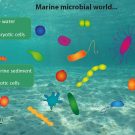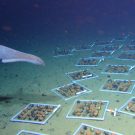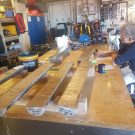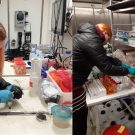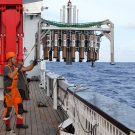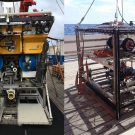The smallest life at the seafloor (Deutsch s.u.) by Batuhan Yapan, MPI and Dr. Julia Otte AWI/MPI The deep sea seems very far away from the perspective of our daily life on land. For comparison, the deep seafloor in the northern Pacific is as far away as the clouds in the sky – about 4000 […]
Real or fake? Exploring animal communities associated with natural and artificial polymetallic nodules
by Sabine Gollner and Coral Diaz Recio Lorenzo (Royal Netherlands Institute for Sea Research NIOZ) The growth of the global economy and technological development is increasingly leading to scarcity of certain metals essential for the high-tech industry. Many countries including a number from the EU are currently exploring the potential of deep-sea mineral resource exploitation […]
The taste of sediment
by Henko de Stigter (Royal Netherlands Institute for Sea Research, NIOZ) Until somebody came up with the idea of mining polymetallic nodules from the abyssal depths of the Pacific Ocean, this place was one of the remotest and quietest on our planet. Far away from the brute natural forces of storms, floods, landslides, tsunamis and […]
Take the chance / Ergreif die Chance
Impression of our youngest scientist (deusch s.u.) Hi, my name is Ann-Kathrin Weßels and I study Biology. I am currently working at the DZMB in Wilhelmshaven at my Bachelor Thesis. I took the chance and left daily life behind for two months for my biggest adventure so far. Thursdays 21st of march: After a brief […]
A small world between grains / Eine kleine Welt zwischen den Sandkörnern
by Dr. Sven Rossel, Katja Uhlenkott und Ann-Kathrin Weßel (deutsch s.u.) “Ah, you’re playing with mud again.” That is something biologists and geologists hear quite often on board. And yes, we are one of the parties “playing with mud”. But actually we, the biologists from Senckenberg, German Centre for Marine Biodiversity Research, are not interested […]
Glimpsing through the eyes of deep-sea cameras/Ein Blick durch die Linse von Tiefsee-Kameras
– The Ocean Floor Observation System (OFOS) and Remotely Operated Vehicle (ROV) – (deutscher Text siehe unten) Many samples that marine biologists gather during research cruises are taken “physically”, such as deep-sea mud that is heaved up from the seafloor onto the deck via different coring gears, and gets further processed in the labs. With […]
